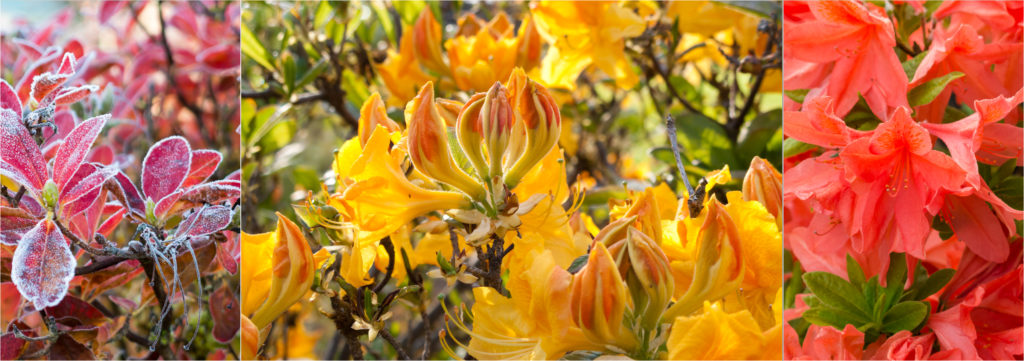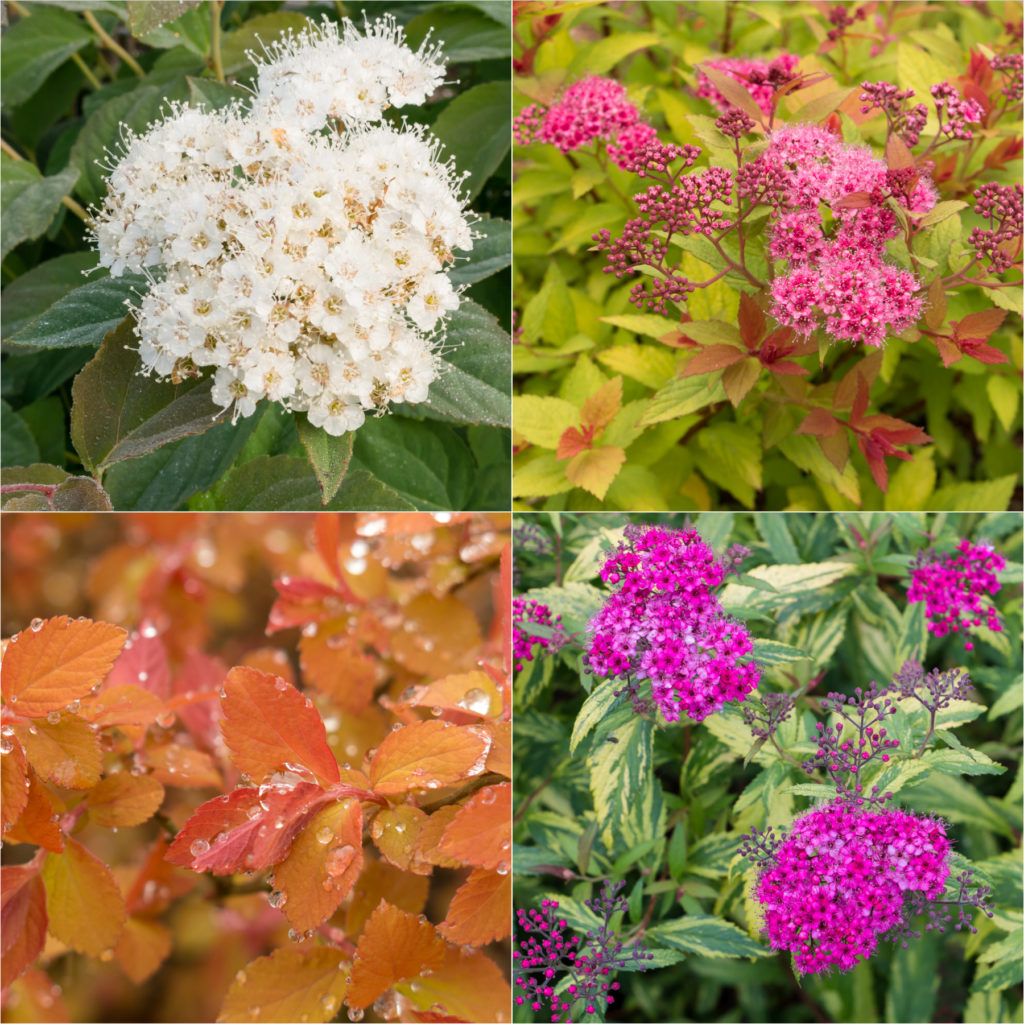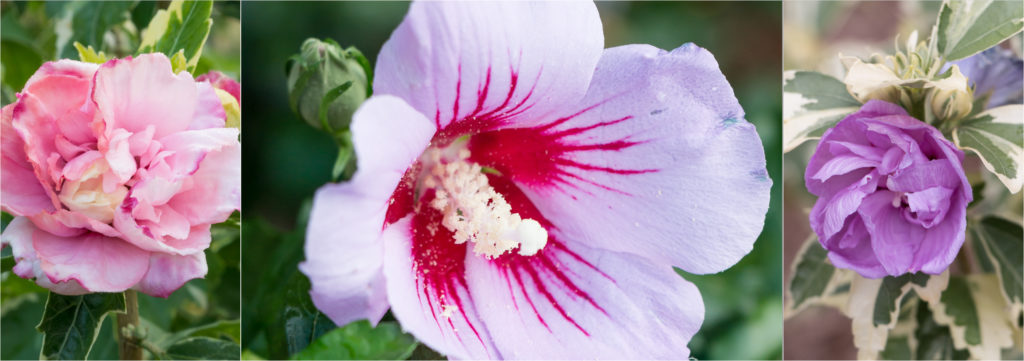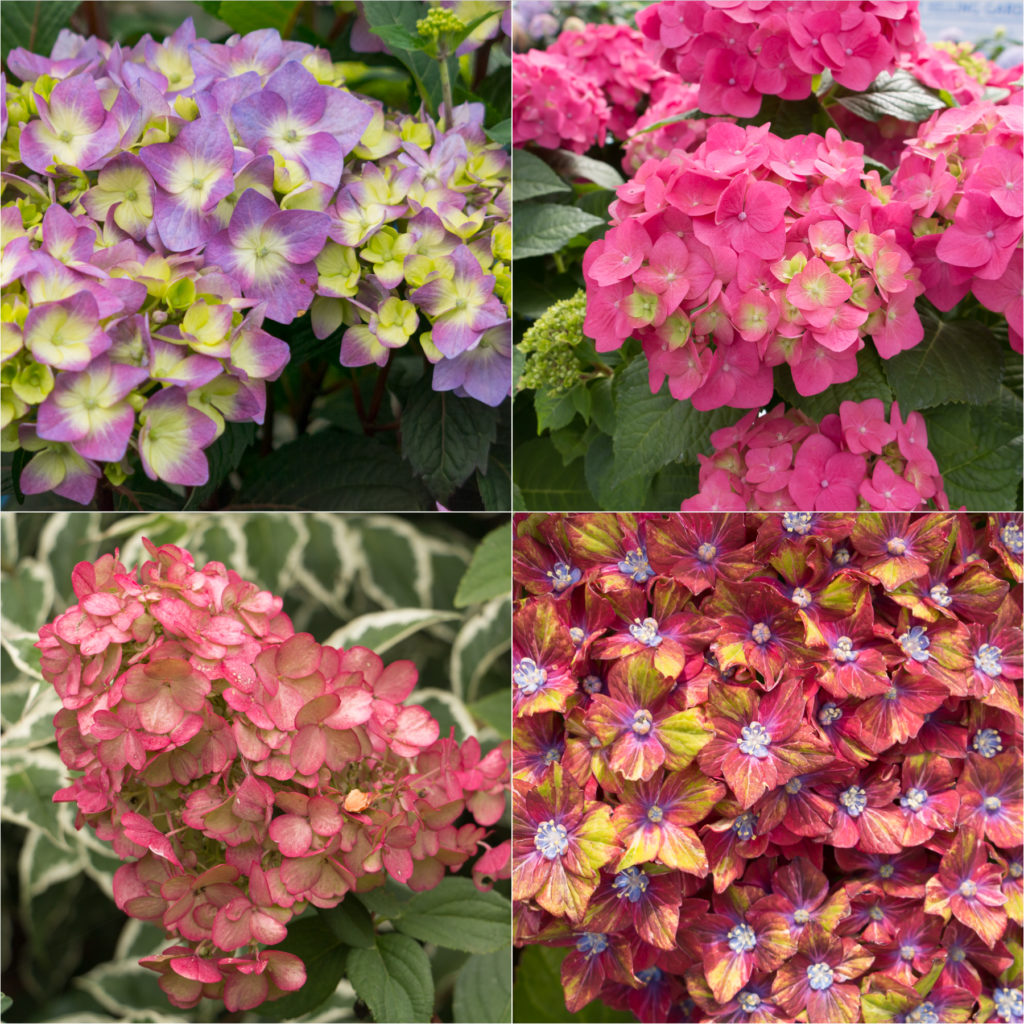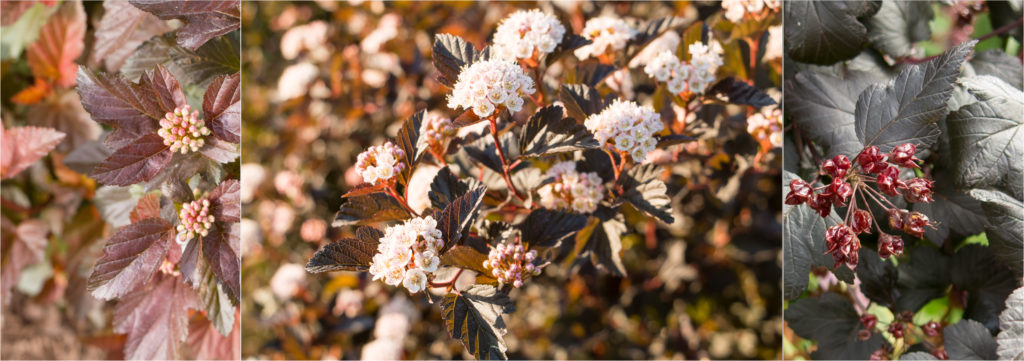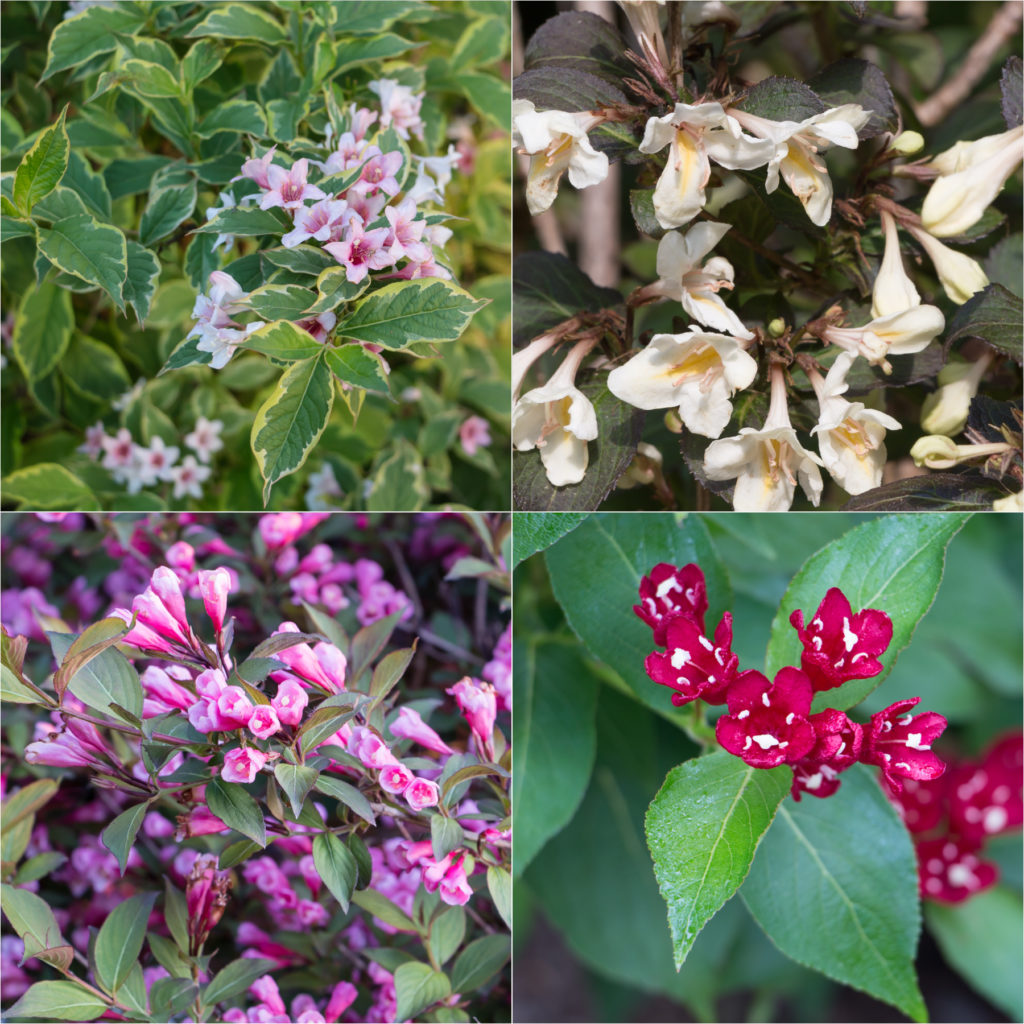Flowers & Foliage – My Favorite, Easy-Care Shrubs
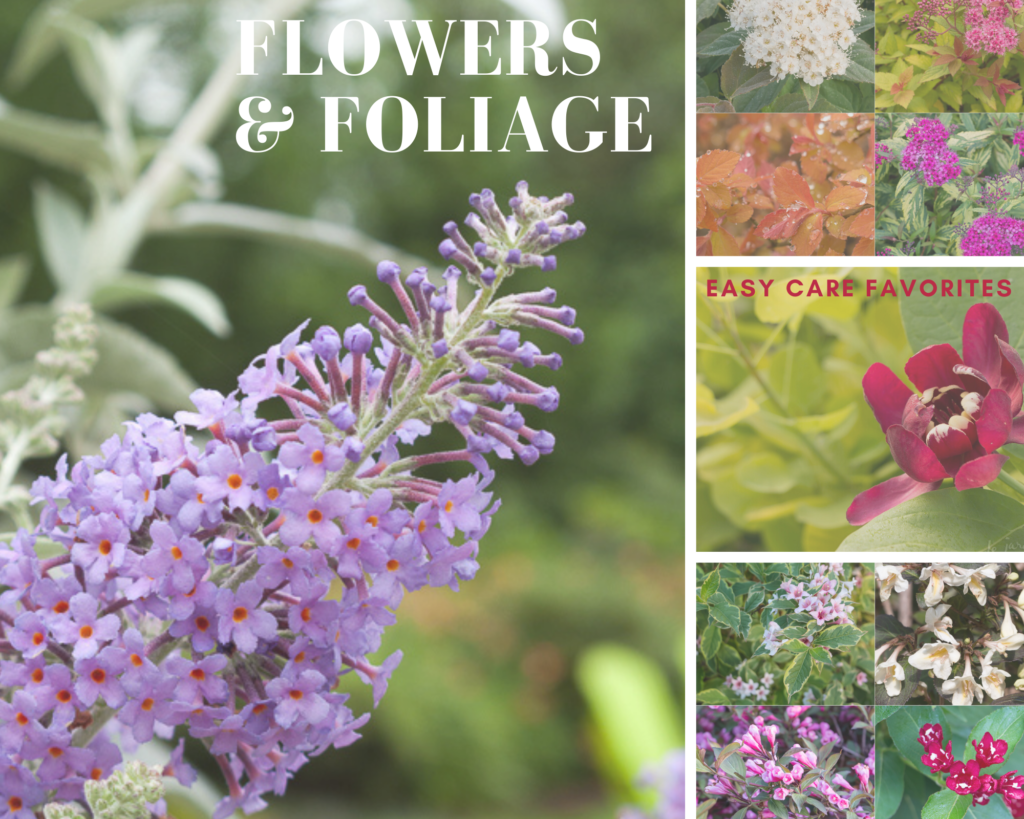
Here in the Pacific Northwest the ubiquitous rhododendron are doing their thing with oversized, luscious blooms in every shade from purest white to deepest purple. They are positively seductive – until suddenly they're not. The sad reality is that a garden filled with these has only a limited season of interest, after which there's just a lot of green leaves, sticky stamens, brown petals, and quite often insect damage to mitigate.
While these and other flowering, broadleaf, evergreen shrubs (e.g. camellia and winter daphne) do make nice additions to a landscape, the inclusion of deciduous shrubs, especially those with colorful leaves as well as flowers, really enhances the visual interest.
I have grown all of the shrubs listed below in my Duvall garden and while the winter-saturated clay soil and perched water table makes longevity a challenge for a few, the majority thrive with minimal care from me. Deer resistance is also necessary here and while the majority of these are seldom severely damaged I have indicated those that are more vulnerable and shared tips on how I manage that.
Special note: some of these may be invasive in parts of the United States and UK. Check with a local horticulturalist or your Extension Office for advice if you are in any doubt.
Exbury Azalea
If you like rhododendron and they do well in your garden, these are likely to thrive also. The main differences are that the flowers of Exbury azaleas are fragrant and the leaves are deciduous. In fact, the fall color is truly outstanding and at least as show-worthy as the rhododendron-like flowers themselves.
Deer: Although I have these where the deer could easily eat them, they have never been damaged. (I'd love to hear of your experience).
Conditions: Grow these in acidic, moisture-retentive soil, and full sun for the best blooms. Although these are not truly drought tolerant, in my moisture retentive and mulched soil, even in full sun they do just fine without supplemental water.
Varieties: the Northern Light series are readily available and have been bred in Minnesota for bud hardiness. Exbury azaleas come in many colors and a range of sizes: I inherited the mature golden yellow flowering variety shown above and have no idea of its provenance but I look forward to it every year.
Butterfly Bush
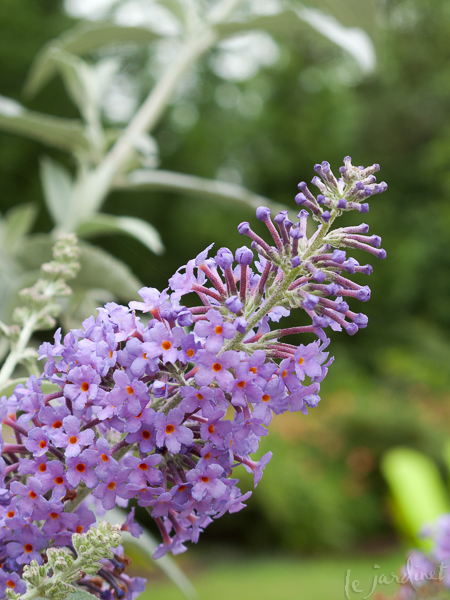
Lochinch butterfly bush may not be fully sterile but I never had any seedlings in my garden. Beautiful mid size shrub with intoxicating fragrance
Who doesn't love the butterfly bush (Buddleia sp.)? Large, fragrant flowers in shades of white, blue or magenta attract bees, butterflies, and hummingbirds. The more recent introductions include not only sterile varieties (it is important to look for these since the species (B. davidii) has became invasive in many areas) but also compact forms that will work even in a container. Foliage is often silver or a silvery-green.
Deer: Highly resistant
Conditions: full sun and well drained soil. Drought tolerant once established.
Varieties: I have grown Lochinch (silver leaves, lavender flowers, semi-sterile in my experience) plus several from the Pugster series and Lo and Behold series. Many others to consider plus this article is helpful as an overview.
Spirea
From voluptuous to petite, there is bound to be a spirea (Spiraea spp.) that works for you. Foliage color ranges from green and blue to gold and chartreuse with butterfly-attracting flowers in white, pink or red. Fall color is often a kaleidoscope of fiery shades while many include purple tints. A quick trim after flowering will keep them tidy. Research selections carefully to choose the best shape and size for your design.
Deer: Seldom severely damaged
Conditions: Full sun or partial sun and average well drained soil. Fairly drought tolerant once established
Varieties: there are several species and many are grown for both flowers and foliage. I have Glow Girl (chartreuse leaves, white flowers), Double Play Painted Lady (variegated green/yellow leaves and deep pink flowers), Double Play Gold (golden leaves, deep pink flowers), Double Play Red (green leaves, red flowers), Pink Sparkler (green leaves, soft pink flowers), Double Play Artisan (red flushed green foliage and fuchsia flowers), Magic Carpet, (gold foliage, deep pink flowers), Goldmound (gold foliage, light pink flowers), Blue Kazoo (blue leaves, white flowers), Spot On (blue-green leaves and soft pink flowers), Sundrop (compact, gold foliage and soft pink flowers), and Poprocks Petite (compact, green leaves and mid pink flowers).
Rose of Sharon
It's taken me a while to fall in love with rose of Sharon (Hibiscus spp.). Some varieties simply look too tropical for my overall aesthetic. When I discovered a couple of varieties with variegated foliage that changed everything though! Although each bloom only lasts a day or so, they cover the shrubs in such numbers that they are really eye-catching. I also like that these are late season bloomers.
Deer: Seldom severely damaged but if the branches are convenient they will eat the flower buds (another good reason to grow the varieties with colorful leaves). A quick spritz with a deer repellent may be necessary if you have a lot of deer pressure.
Conditions: Full sun, average soil. Drought tolerant once established.
Varieties: I have grown Sugar Tip (variegated foliage, soft pink double flowers), Summer Ruffle (variegated foliage, orchid pink/lavender semi-double flowers, more upright form than Sugar Tip), Orchid Satin (green leaves with single, pale lavender flower/red throat), Purple Pillar (similar color to Orchid Satin but deeper and on a more columnar shrub) and White Pillar (white flowers, narrow form, green leaves). There are many others to select from too.
Hydrangea
If you enjoy creating floral arrangements and have a spot with morning sun and afternoon shade (or at least filtered shade) then you need to grow some hydrangeas. Whether you prefer the huge snowy spheres of Annabelle, the traditional mophead, a delicate lace cap, large ice-cream cone type blooms of the pee-gees, the effortless maintenance of the varieties that grow on both old and new wood (ie you can't prune them incorrectly), a giant or a container specimen – there will be a hydrangea to suit. If I had a deer-free garden I'd include far more of these but sadly the deer are especially fond of the flower buds so I have to either spray or tuck them so deep into the border that the deer have to struggle to reach them.
Deer: on their 'favorites' list. Will need spraying and/or careful siting.
Conditions: hydrangeas need regular water and protection from afternoon sun
Varieties: with several species and many varieties to select from you will have plenty of choices. Some personal favorites of mine include Bloomstruck (one of the Endless Series, striking dark stems, blue/purple flowers), Pistachio (compact, rebloomer, vivid pink flowers with apple green and blue-purple tints), Tilt-A-Swirl (raspberry and apple green bi-color flower on a compact plant), Summer Crush (incredible raspberry-red blooms, compact), FireLight (PG type with green leaves and white flowers that fade to pink then burgundy), Gatsby Gal (oak leaf type with red fall color, white panicle flowers and lighter green leaves. Fairly compact), Bobo (compact PG type), Little Honey (golden leaves that transition to deep red in fall/winter and white panicle flowers). Also review these resources: Proven Winners, Endless Series
Ninebark
Colorful leaves that seem to glow and transition through several shades between spring and fall, interesting buds, delightful flowers, and textured bark – this deciduous shrub has it all. Ninebark (Physocarpus spp.) are great for floral arrangements and the shrubs are available in a variety of colors and sizes.
Deer: spray or protect as the deer do like these.
Conditions: these are tough! Tolerant of most soils and happy in full sun-part shade although the best color and flower production will be in full sun. Drought tolerant once established.
Varieties: My current favorites include Ginger Wine (ginger-bronze leaves, white flowers, good disease resistance), Coppertina (similar to Ginger Wine but slightly larger), Little Devil (a compact variety with dark bronze leaves and white flowers), and Panther (a good mid-size variety with almost-black foliage and pale pink flowers, although Panther has fewer flowers than most – it's more about the leaves).
Sweetshrub
Sweetshrub (Calycanthus) was new to me a few years ago and having had a chance to assess it I am so impressed that I often include it in designs for clients. This isn't a small shrub. It's not something to put by your front door. And truthfully it's a bit ungainly and seems to look best at the back of a border where it can lean on and grow through other trees and shrubs. So why do I like it? Large, light green leaves almost look tropical and really stand out among the more typical garden foliage palette. It blooms from June until October for me, each flower being several inches across and having a scent reminiscent of crushed apples. In my garden it has been highly deer resistant although I know if colleagues in Alabama who have said this has not been their experience. It never receives supplemental water yet looks fresh throughout the season.
Deer: Good resistance for me even though the deer have to walk right past it every day, but ask local gardeners for their experience.
Conditions: partial shade seems to be ideal. Mine gets filtered sun for much for the day but no direct hot, afternoon sun. I have grown mine in poor, clay soil that gets very wet in the winter but never gets extra water in the summer. I doubt that's ideal – but it is thriving!
Varieties: I have only grown Aphrodite here but there are other varieties available too including some with white flowers such as Venus.
Weigela
If you thought I had a lot of spirea – look at how many varieties of weigela I grow! That should tell you something about how easy they area, their excellent level of deer resistance, and their drought tolerance (once established). I focus on varieties with colorful leaves but their tubular flowers attract hummingbirds and bees and there are many to choose from.
Deer: Excellent resistance
Conditions: Best in full sun, average soil. Drought tolerant once established
Varieties: These are the ones I currently grow. Strobe (bright pink flowers against green and bronze – then orange – then crimson red foliage), Magical Fantasy (green and white variegated leaves, pale pink flowers), Maroon Swoon (green leaves, clear red flowers with white stamens), Tuxedo (dark leaves, white flowers), Midnight Wine (dark leaves, hot pink flowers, compact), Spilled Wine (similar to Midnight Wine but even better color) , Electric Love (dark leaves, red flowers, compact form), My Monet Purple Effect (compact, variegated leaf, pink flower), and a variegated form which has more yellow/cream variegation and pale pink flowers. You can read more about some of these varieties and how to use them in the landscape here.
Which one is your favorite?
Subscribe to Receive Blog Posts
Gardening inspiration delivered right to your inbox from Le Jardinet
